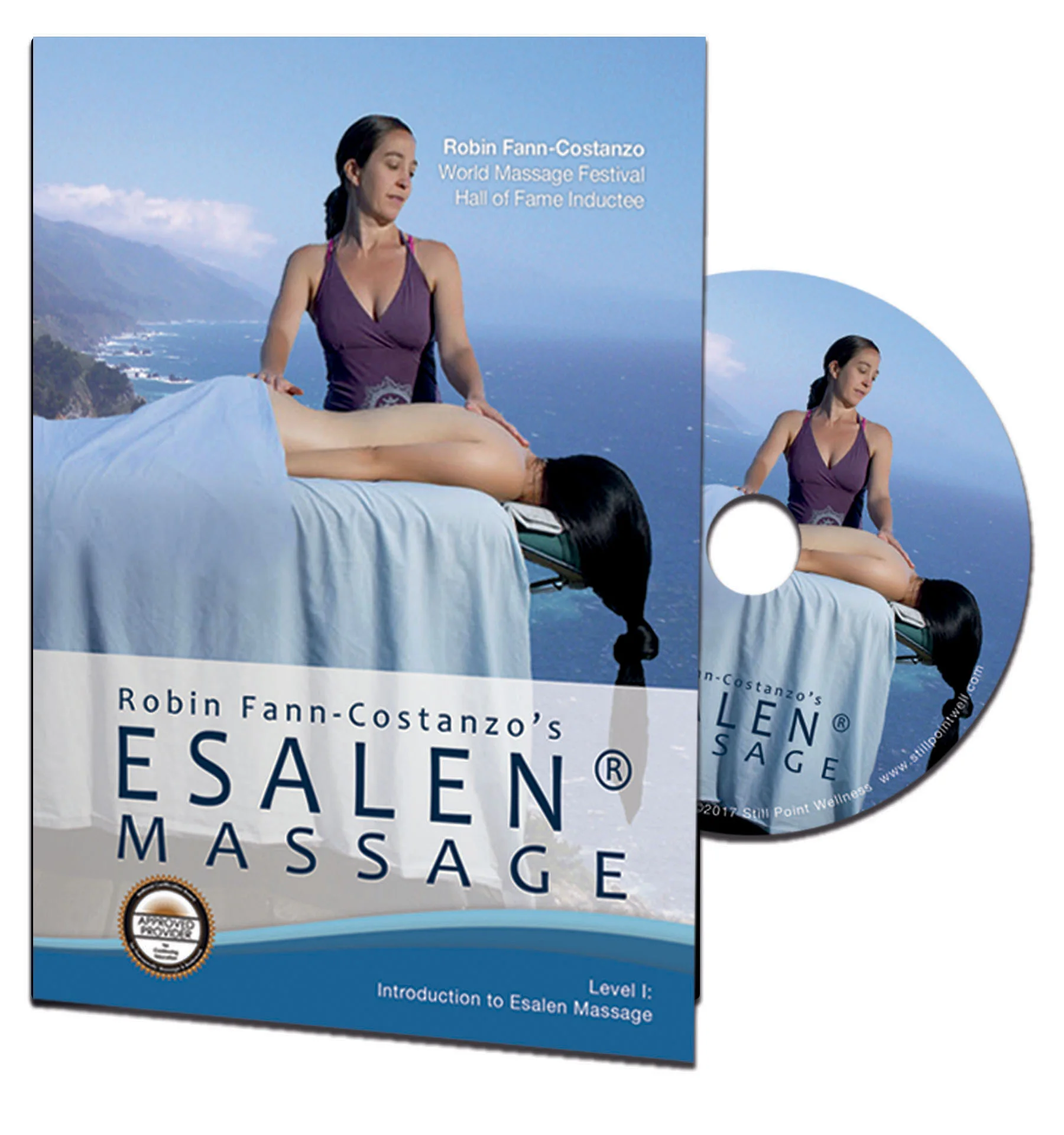Skills for developing presence and mindfulness through movement and meditation
Understanding the History, development, and influences on Esalen massage: How it began, who developed Esalen massage. How the Esalen Institute and the era of the 1960’s was important. How the work of Charlotte Selver, Swedish massage, and other’s played a key role in it’s evolution. How Esalen massage continues to evolve today
Understanding the principles of Esalen Massage: presence, listening skills, flow, responsiveness.
Using the Esalen principles when addressing specific areas of concern. Review of anatomical terms, muscles, origins and insertions, working with injuries, working with resistance, understanding the contraindications of massage, communication during a session, working at a variety of depths,
Deepening the art of sensing and listening while giving and receiving a massage: how to interpret what you are feeling, engaging the client in the process of receiving, how deep to go.
Learning to build repertoire with your client through professional communication and relational assessment: building safety and trust, how to ask for feedback, relational approach: understanding the relationship between mind and body, and working with both, working with the mind/body connection and staying in scope of practice, understanding the psychology of relaxation, what to do when emotions arise.
Learning specific massage techniques and Esalen principles for each segment of the body: limbs (arms and legs), torso (back, chest, abdomen), hands, feet, neck, head (face and scalp)
Understanding the role of the nervous system in massage and learning techniques that impact the nervous system: the anatomy of the nervous system, pacing, rocking and holds
Learning how to apply passive joint movement: safely moving arms and legs, assessing for limitations and restrictions in movement
Learning stretches to lengthen and release muscles with the legs, arms and neck
Learning to work with the antagonistic muscle and primary muscles together
Learn self-care exercises for practitioners to work with ease, maintain strength, and cultivate calm and focus: best practices for good body mechanics and self care
Understanding energetics of massage and working with chakras, meridians, and holds
Understanding and addressing Ethical concerns in massage: focus on boundaries, professionalism, power differential, communication skills, and dual relationships
Understanding best business practices in massage: navigating financials, policy, and social media/advertising
Additional accommodations for clients with special needs: working in the side lying position, what does it mean to be “trauma informed”






